Filter by
Recurrence Quantification Analysis: Theory and Best Practices
The analysis of recurrences in dynamical systems by using recurrence plots and their quantification is still an emerging field. Over the past decades recurrence plots have proven to be valuable data visualization and analysis tools in the theoretical study of complex, time-varying dynamical systems as well as in various applications in biology, neuroscience, kinesiology, psychology, physiology,…
- Edition
- -
- ISBN/ISSN
- 978-3-319-07155-8
- Collation
- -
- Series Title
- -
- Call Number
- 571.4

Dissipative exciton dynamics in light-harvesting complexes
Marco Schröter investigates the influence of the local environment on the exciton dynamics within molecular aggregates, which build, e.g., the light-harvesting complexes of plants, bacteria or algae by means of the hierarchy equations of motion (HEOM) method. He addresses the following questions in detail: How can coherent oscillations within a system of coupled molecules be interpreted? What…
- Edition
- -
- ISBN/ISSN
- 9783658092825
- Collation
- -
- Series Title
- -
- Call Number
- 571.4
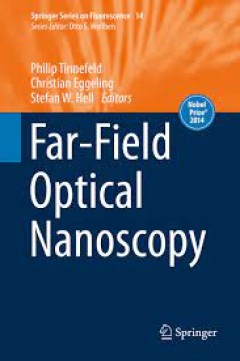
Far-Field Optical Nanoscopy
This book describes developments in the field of super-resolution fluorescence microscopy or nanoscopy. In 11 chapters, distinguished scientists and leaders in their respective fields describe different nanoscopy approaches, various labeling technologies, and concrete applications. The topics covered include the principles and applications of the most popular nanoscopy techniques STED and (f)PA…
- Edition
- -
- ISBN/ISSN
- 978-3-662-45547-0
- Collation
- XII, 335
- Series Title
- -
- Call Number
- -
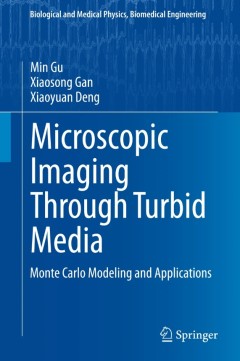
Microscopic Imaging Through Turbid Media
This book provides a systematic introduction to the principles of microscopic imaging through tissue-like turbid media in terms of Monte-Carlo simulation. It describes various gating mechanisms based on the physical differences between the un scattered and scattered photons and method for microscopic image reconstruction, using the concept of the effective point spread function. Imaging an obje…
- Edition
- 1
- ISBN/ISSN
- 978-3-662-46396-3
- Collation
- XII, 187
- Series Title
- Biological and Medical Physics, Biomedical Engineering
- Call Number
- -
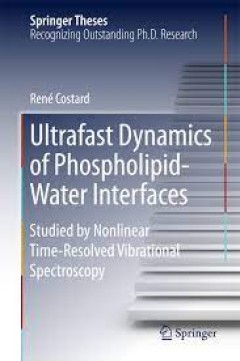
Ultrafast Dynamics of Phospholipid-Water Interfaces Studied by Nonlinear Tim…
This thesis presents a highly innovative study of the ultrafast structural and vibrational dynamics of hydrated phospholipids, the basic constituents of cell membranes. As a novel approach to the water-phospholipid interface, the author studies phosphate vibrations using the most advanced methods of nonlinear vibrational spectroscopy, including femtosecond two-dimensional infrared spectroscopy.…
- Edition
- -
- ISBN/ISSN
- 978-3-319-22066-6
- Collation
- 36 b/w illustrations, 6 illustrations in colour
- Series Title
- -
- Call Number
- -

The Brain and Conscious Unity
In this provocative text, a noted neuroscientist reexamines Freud's posthumously published Project of Scientific Psychology in the light of modern neuroscience. This expanded "thermodynamics of the mind" model includes robust conceptions of the cellular and neural processes that accompany creation of consciousness and memory, their contributions to such conditions as depression, dissociative d…
- Edition
- -
- ISBN/ISSN
- 978-1-4939-2700-5
- Collation
- IX, 133
- Series Title
- -
- Call Number
- -
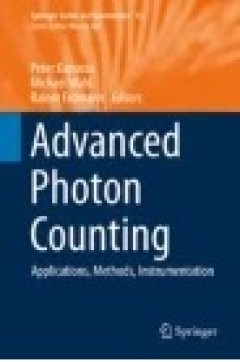
Advanced Photon Counting: Applications, Methods, Instrumentation
This volume focuses on Time-Correlated Single Photon Counting (TCSPC), a powerful tool allowing luminescence lifetime measurements to be made with high temporal resolution, even on single molecules. Combining spectrum and lifetime provides a “fingerprint” for identifying such molecules in the presence of a background. Used together with confocal detection, this permits single-molecule spect…
- Edition
- Ed. 1
- ISBN/ISSN
- 978-3-319-15636-1
- Collation
- XII, 370
- Series Title
- Springer Series on Fluorescence
- Call Number
- 621.366 ADV a

Modeling in Biopharmaceutics, Pharmacokinetics and Pharmacodynamics
The state of the art in Biopharmaceutics, Pharmacokinetics, and Pharmacodynamics Modeling is presented in this new second edition book. It shows how advanced physical and mathematical methods can expand classical models in order to cover heterogeneous drug-biological processes and therapeutic effects in the body. The book is divided into four parts; the first deals with the fundamental princ…
- Edition
- 2
- ISBN/ISSN
- 978-3-319-27596-3
- Collation
- XXII, 483
- Series Title
- Interdisciplinary Applied Mathematics
- Call Number
- -
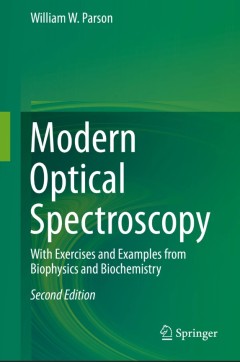
Modern Optical Spectroscopy
This textbook offers clear explanations of optical spectroscopic phenomena and shows how spectroscopic techniques are used in modern molecular and cellular biophysics and biochemistry. The topics covered include electronic and vibrational absorption, fluorescence, resonance energy transfer, exciton interactions, circular dichroism, coherence and dephasing, ultrafast pump-probe and photon-echo s…
- Edition
- 2
- ISBN/ISSN
- 978-3-662-46776-3
- Collation
- xvi, 572
- Series Title
- -
- Call Number
- -

Kinetics of Enzyme-Modifier Interactions: Selected Topics in the Theory and D…
The kinetic mechanisms by which enzymes interact with inhibitors and activators, collectively called modifiers, are scrutinized and ranked taxonomically into autonomous species in a way similar to that used in the biological classification of plants and animals. The systematization of the mechanisms is based on two fundamental characters: the allosteric linkage between substrate and modifier an…
- Edition
- -
- ISBN/ISSN
- 978-3-7091-1402-5
- Collation
- -
- Series Title
- -
- Call Number
- -
 Computer Science, Information & General Works
Computer Science, Information & General Works  Philosophy & Psychology
Philosophy & Psychology  Religion
Religion  Social Sciences
Social Sciences  Language
Language  Pure Science
Pure Science  Applied Sciences
Applied Sciences  Art & Recreation
Art & Recreation  Literature
Literature  History & Geography
History & Geography